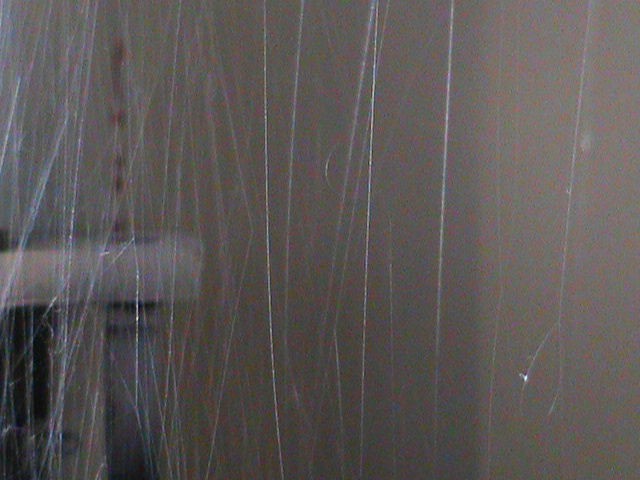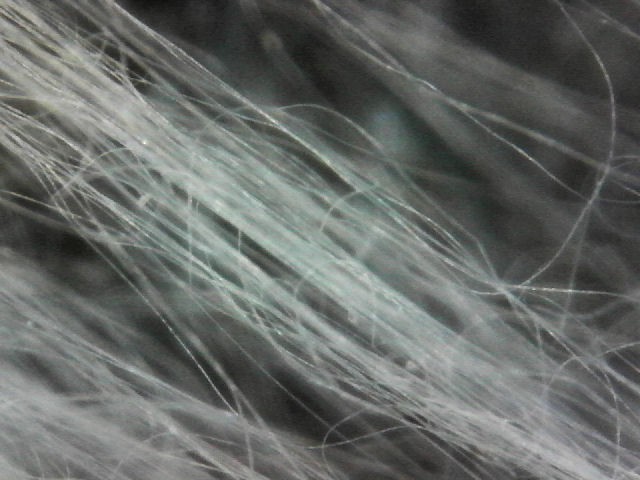Spent the last few days making run after run, filling out page after page of charts of all the parameters as I went through to find the best setup to pull ABS. Got it about nailed down last night and hit it again today.
By noon I had it pulling dependable 200 mm to 210 mm long fibers, slimmer than spiders silk. And a very small spider at that!
Problem wasn't pulling them. The problem was where the darn things were going. I had a veritable forest of them at one point, with one end rooted on the plate and the other stuck to the top of the chamber. Yes, the chamber. What the heck? Why were they picking there to attach?
Check out the photos below.
This afternoon I played a hunch, and switched it up so the negative lead is on the emitter and the positive is on the plate. Guess what? It worked like a charm. The fibers now head straight for the plate instead of swirling all over the place. Before, as many if not most of the fibers stuck to the belt, the top of the chamber, and the chamber walls. Not any more.
Turns out ABS likes to be pulled in reverse, so to speak.
Why ABS and why all the attention on it?
Because I intend to make some more conductive ABS, that's why. I've already made some a few months back, but they were not in any form I could make use of, what with being sprayed all over the place. Now that I can get them to land where I want them I'm going to make a run on the rotary and get them all lined up running the same way. You'll see why when I get the results posted in a few days.
So that's where we're at. A VERY good day, I'd say.
Oh, one more point about switching the leads around. Before I had fibers all over the chamber. Now I ran a decent unwoven mat that was all in about a 75 mm diameter circle with the table set 200 mm away. There was very little spill over outside of that circle.
Yep, a very good day. :D



 Douglas Miller
Douglas Miller
Discussions
Become a Hackaday.io Member
Create an account to leave a comment. Already have an account? Log In.